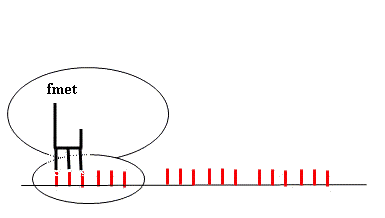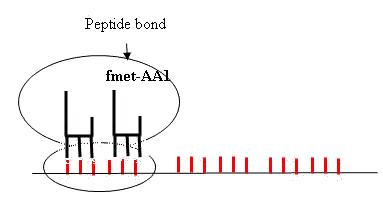|
Bacterial Protein Synthesis You may need to know some terminologies before you proceed, like protein, mRNA, enzymes, |
Inhibitors of Bacterial Protein Synthesis |
|
Protein
Synthesis System: 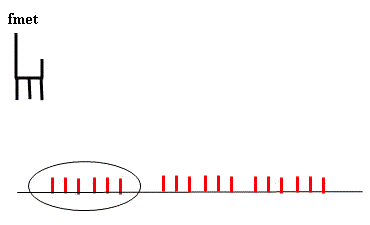 Bacterial Protein Synthesis apparatus known as Ribosome, is consisting of two structural units, 50s and 30s. The smaller sub-unit of ribosome binds on the mRNA tract, starts protein synthesis, by forming an initiation complex as shown in the next step. |
||
Formation of Initiation Complex:
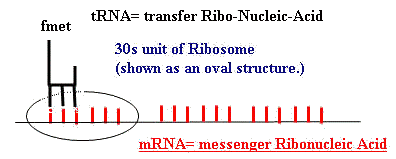 Protein synthesis begins with the formation of an intiation complex, where smaller sub unit (30S) of ribosome positions on mRNA template and invites a specific tRNA (fmet-tRNA) to rest on the triplet-codons present on mRNA(shown as pair of three red lines on a line). The |
||
|
Begining of Protein synthesis: |
||
Arrival of a new tRNA carrying an amino
acid to the site of protein synthesis. 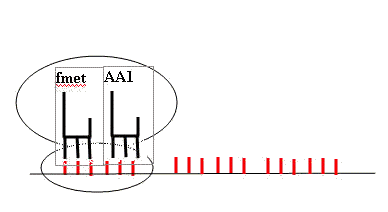 At this stage, two amino acids are positioned next to each other with two tRNAs. The site on the left is known as "P-Site", and the site on the right is known as "A-Site" There are several compounds ( mentioned in the right column) that can interfere with this bonding, inhibiting bacterial protein synthesis. |
Action of Macrolides and Chloramphenicol |
|
The Peptide bonding btween two amino
acids is inhibited by Chlorampgenicol and Macrolides, that binds to 50s unit of the bacterial ribosome.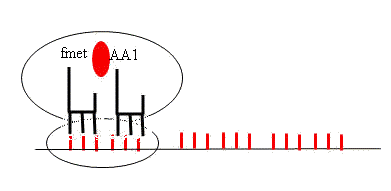 The macrolides (erythromycin, azithromycin, clarithromycin, dirithromycin, troleandomycin, etc.) bind reversibly to the 50S subunit.They can inhibit elongation of the protein by the peptidyltransferase, the enzyme that forms peptide bonds between the amino acids. |
||
|
Peptide Bond Formation between Two
amino acids The peptide bonding holds the amino acid together. The very first tRNA hands over the amino acid to the next one. |
|
|
|
Action of
Aminoglycosides |
||
The empty tRNA get dislodged from the
template
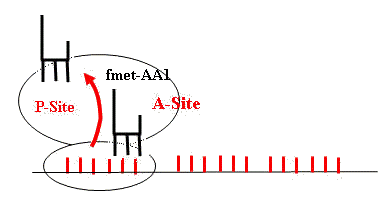 |
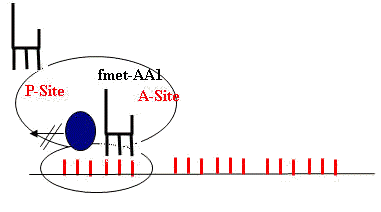 The Aminoglycosides (streptomycin, neomycin, netilmicin, tobramycin, gentamicin, amikacin, etc.) bind irreversibly to the 30S subunit of bacterial ribosomes. There is evidence that some prevent the transfer of the peptidyl tRNA from the A-site to the P-site, thus preventing the elongation of the polypeptide chain. |
|
The tRRNA carrying chain of amino acids moves to the P site
 Under the normal condition, the tRNA carrying the chain of amino acids will move the P site, clearing the A site for new tRNA carrying another amino acid. The template (mRNA) selects the type of tRNA carrying an amino acid. |
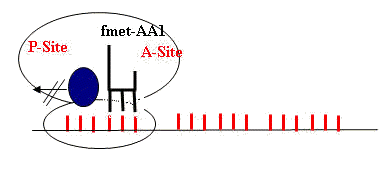 |
|
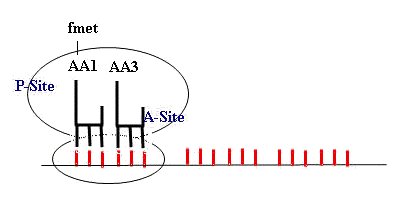 |
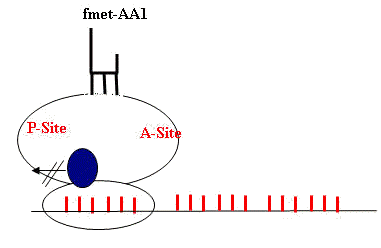 |
|
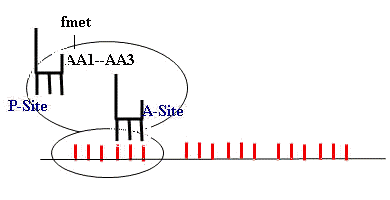 The cycle of continues till the template (mRNA) allows to continue, as directed by the gene, and at the end stops this reaction by a set a triplet-codon called terminating codon. For further readings: http://www.emunix.emich.edu/~rwinning/genetics/transl.htm |
||
| Protein: Structurally proteins are composed of numerous smaller units call amino acids. These amino acids are derived from the various nutrients and foods. | Details | |
| tRNA =
This is a kind of RNA that carries amino acids to be added to the
growing chain of amino acids, to the site of action. Cool! mRNA= It decides what kind of protein to be synthesized. It also decides which the amino acids to be added to the growing chain of amino acids . If DNA (Gene) is the Text-Book, think mRNA as a teacher, who tells you how to finish your home work. It is a track on which all the tools of protein synthesis will run. Clear! |
||
